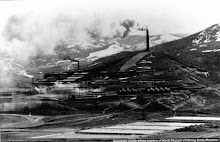









"The folks that care"










Acute exposure to cadmium fumes may cause flu like symptoms including chills, fever, and muscle ache sometimes referred to as "the cadmium blues." Symptoms may resolve after a week if there is no respiratory damage. More severe exposures can cause tracheo-bronchitis, pneumonitis, and pulmonary edema. Symptoms of inflammation may start hours after the exposure and include cough, dryness and irritation of the nose and throat, headache, dizziness, weakness, fever, chills, and chest pain.
Inhaling cadmium-laden dust quickly leads to respiratory tract and kidney problems which can be fatal (often from renal failure). Ingestion of any significant amount of cadmium causes immediate poisoning and damage to the liver and the kidneys. Compounds containing cadmium are also carcinogenic.
The bones become soft (osteomalacia), lose bone mineral density (osteoporosis) and become weaker. This causes the pain in the joints and the back, and also increases the risk of fractures. In extreme cases of cadmium poisoning, the mere body weight causes a fracture.
The kidneys lose their function to remove acids from the blood in proximal renal tubular dysfunction. The kidney damage inflicted by cadmium poisoning is irreversible and does not heal over time. The proximal renal tubular dysfunction creates low phosphate levels in the blood (hypophosphatemia), causing muscle weakness and sometimes coma. The dysfunction also causes gout, a form of arthritis due to the accumulation of uric acid crystals in the joints because of high acidity of the blood (hyperuricemia). Another side effect is increased levels of chloride in the blood (hyperchloremia). The kidneys can also shrink up to 30%.
Other patients lose their sense of smell (anosmia).
















 This repository cell awaits capping.
This repository cell awaits capping. Milltown sediments, rich in both heavy metals and organic matter, are used to cap areas at the repository, which home to more than 300 million cubic yards of smelter waste.
Milltown sediments, rich in both heavy metals and organic matter, are used to cap areas at the repository, which home to more than 300 million cubic yards of smelter waste.

















To leave a comment, there are a couple of ways. The first, is to type your message and below the message, Type your name so I know who you are and then on the bottom of the page there is a place to check anonymous. Check this and you won't have to join google.com. The other way is to join and put in your user name and password...

